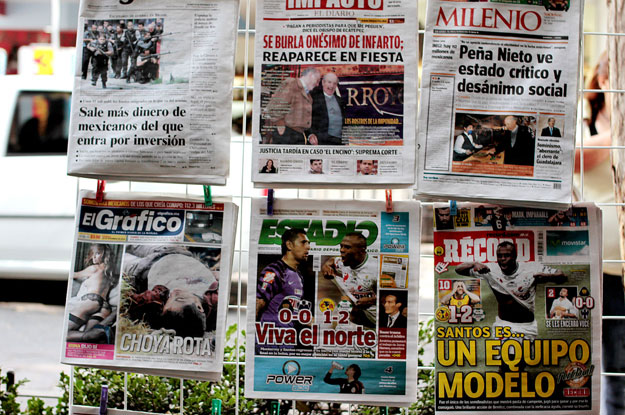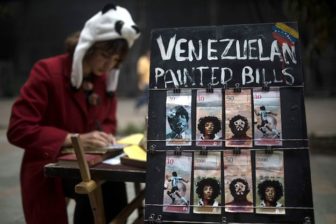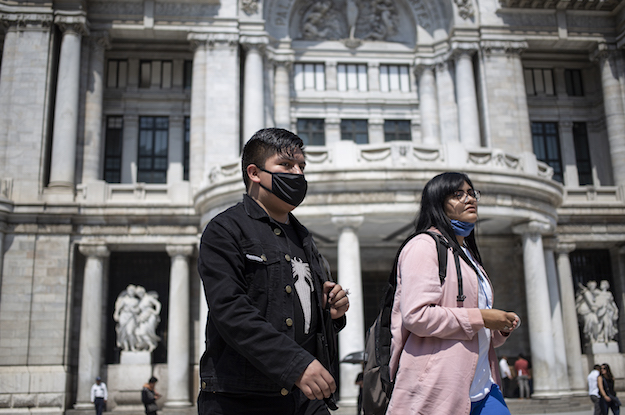If 2017 is anything like 2016, making predictions on where Latin America will be a year from now is probably a losing bet. Remember when it seemed inevitable that voters in Colombia would pass the country’s landmark peace accord with the FARC, or that the Rio Olympics would be crippled by large-scale social unrest? The year ahead promises to be just as tough to forecast. Questions like where U.S. President-elect Donald Trump will take U.S.-Latin America relations and how the ongoing political and economic crises in Brazil and Venezuela will play out are likely to keep potential prognosticators busy.
Some less-covered stories, meanwhile, have been developing over the course of 2016 and are expected to cause ripples throughout the hemisphere in the coming year. Below, five of the region’s leading experts speak to AQ about the under-the-radar stories that they’ll be watching in 2017.
1. Haiti’s Migrant Crisis
“Thousands of Haitians are expected to leave their country in 2017, following the tens of thousands that have already fled for Chile, Brazil and Mexico in the post-quake years in hopes of eventually making their way to the U.S., which has resumed deportations after temporarily halting them. The migrants are leaving a country that, seven years after a 7.0-magnitude earthquake upended its fragile economy, continues its struggle toward recovery with thousands still living in tents. Moreover, the country is battling a new humanitarian crisis after Hurricane Matthew devastated its southern peninsula in early October. The storm’s $2 billion toll is roughly a fifth of the country’s GDP, made worse by the hurricane’s impact on agricultural production in one of Haiti’s most fertile areas. In addition, the looming end of Petrocaribe petroleum subsidies in the wake of Venezuela’s economic and political crises increasingly puts Haiti’s own budget and energy security at risk. Meanwhile, debt remains high, foreign aid slowed, and foreign domestic investment insignificant. The domestic currency, which has lost 40 percent of its value since May 2011, continues a downward spiral. All of this will only exacerbate the country’s migrant exodus in 2017, despite the hope promised by this year’s presidential elections, with doubt persisting over the results.”
– Jacqueline Charles, Senior Haiti Reporter for the Miami Herald
2. Mexico’s Southern Border Migration Flow
“While much attention in 2017 will be on Mexico’s northern border with the U.S. – for obvious reasons – keep an eye on the country’s southern border as well.
Back in 2014, the U.S. faced the spectacle of a record number of Central Americans – many of them children and families – pouring over the southern border to seek refuge from violence, poverty and devastating drought. These numbers have since declined – not because Hondurans, Guatemalans, and Salvadorans stopped leaving their homelands but because Mexico stepped up its own deportation efforts, sending back over 150,000 individuals last year before they reached the U.S.
A big question for the coming year is whether this cooperation will continue with a Trump administration. During the campaign, then-candidate Trump called Mexicans all sorts of unsavory things, and during the transition he has repeated his promises to build a wall and renegotiate the North American Free Trade Agreement (NAFTA). This often un-neighborly approach may incite a similar response from Mexico in 2017. As the country looks toward its own 2018 presidential election cycle, the government could preserve both economic and domestic political capital by looking the other way as migrants enter through its southern border.
Already the numbers of Central American migrants reaching the southern U.S. border are rising – over 100,000 came just this fall. A tough line toward Mexico from President-elect Trump will likely accelerate this emerging refugee crisis.”
– Shannon O’Neil, Senior Fellow for Latin America Studies and Director of the Civil Society, Markets, and Democracy Program at the Council on Foreign Relations
3. Honduras’ Presidential Election
“In spite of a constitutional prohibition on re-election, Honduras President Juan Orlando Hernández will run for a second term in 2017 after the Supreme Court cleared the way for a bid back in 2015. The president’s re-election effort threaten Honduras’ democracy and constitution, which have already been weakened by the country’s 2009 coup as well as his more recent consolidation of power in the legislative and judicial branches. Hernández, however, has enough popularity and institutional control that he will likely win. Expect media coverage of the election to likely focus on the irony of a presidential re-election occurring less than a decade after the military coup that forced out former president (and likely 2017 candidate) Manuel Zelaya and was often portrayed as an attempt to prevent Zelaya’s own presidential re-election.
To only rehash the 2009 arguments will miss the many relevant issues at play in 2017. Though security has statistically improved, Honduras remains one of the world’s most violent countries and among its most dangerous for environmental and human rights defenders. Corruption and organized crime run deep, with domestic investigations politicized and the new OAS-backed anti-corruption organization only beginning to function. Additionally, Hernández, who many policymakers in both U.S. political parties view as an ally, faces a tough international challenge as President-elect Trump’s administration threatens to increase deportations of Central American migrants.”
– James Bosworth, Author of Bloggings By Boz
4. Brazil’s Bankrupt States
“Brazilian states will continue to face dramatic cash shortages in 2017 amidst the ongoing recession, and with the 2018 general elections looming, expect the already tense relationship between President Michel Temer, his congressional base, and state governors to grow increasingly complicated.
Although excessive debts and deficits at the state level are not a new phenomenon in Brazil – the southern-most state of Rio Grande do Sul has been grappling with this problem for years – the country’s fiscal crisis has now engulfed other large states such as Rio de Janeiro and Minas Gerais. Both have declared a “state of financial calamity,” which is equivalent to declaring bankruptcy in Brazil. Many states have resorted to parceling or halting payment to public servants, affecting services like health, education and security. The federal government has been involved in negotiations with state governors to alleviate their immediate constraints, but, given its own fiscal challenges, there is little it can do in the short term. As Temer’s disapproval ratings remain high, maintaining governors’ support will be crucial if his administration hopes to keep the congressional cohesion needed to pass a comprehensive reform of the country’s social security system, one of the most important pillars of the government’s reform efforts.”
– Monica de Bolle, Senior Fellow at the Peterson Institute for International Economics
5. Latin America’s Reaction to Climate Change
“While the U.S. agenda on climate change looks precarious with President-elect Trump’s picks of climate change skeptics and denialists, Latin America is heading in the opposite direction. In 2017, expect to increasingly hear actors in the private sector, multilateral development banks and civil society making the case for why action on climate change is needed for sustainable development. Countries from the region strongly back the Paris climate agreement and in November, many announced plans to reduce emissions and promote renewable energy during the U.N. climate change conference in Marrakech. These efforts come as the region prepares to feel climate change’s effects in increasingly tangible ways, from drought in the Andes and the Amazon basin to more powerful hurricanes in the Caribbean. As countries grapple with challenging growth forecasts for next year, leaders in 2017 may find opportunity in confronting climate change. Measures to improve energy efficiency, for example, could help the region save billions of dollars annually and make businesses more competitive. Strong support for renewable energy, including solar and wind, could attract investment and reduce emissions. Meanwhile, backing clean public transport can enhance mobility and productivity levels in cities while preventing thousands of premature deaths from air pollution. In the Amazon, increasing modest investments to secure land rights for indigenous peoples could also significantly reduce emissions from deforestation and help protect vital ecosystems.”
– Guy Edwards, Research Fellow and Co-director of the Climate and Development Lab at Brown University’s Institute for Environment and Society








